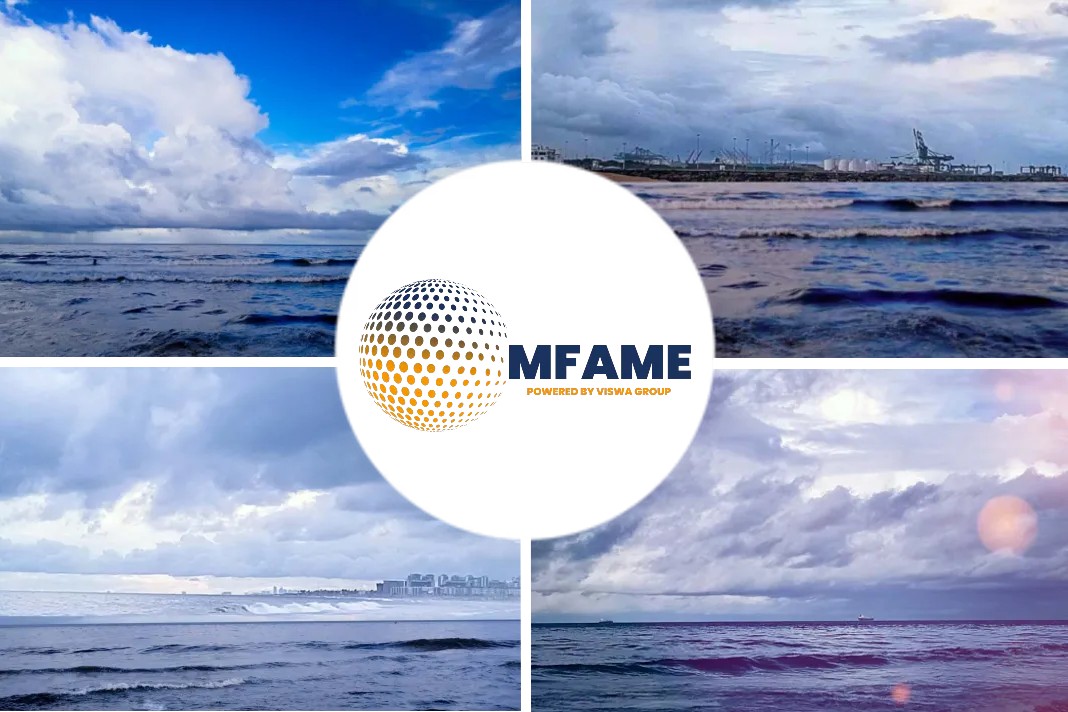Although important steps are being taken to address the problem of containership fires, so far in 2020, there has been one fire involving containerized cargo every two weeks, reports Gard.
Cargo related fires onboard container ships have been the topic of frequent discussions in the industry in recent years. Luckily, we have not lately seen large casualties like the Yantian Express, Maersk Honam, or the MSC Flaminia.
However, the fundamental challenges remain the same and with them the need to keep up the pressure for change – one year after the Gard conference on this issue.
The number of fires in containers is stable
There has been no shortage of smaller fires, near misses on-board, and fires occurring in containers within terminal areas.
Swift action from the crew, but also some good fortune can be the difference between a small fire and a large-scale casualty. Statistics suggest that the frequency of fires emerging from containerized cargo is not going down. By our count and on average there has been roughly one fire every two weeks so far in 2020.
Source of cargo-related fires
The most frequent source of cargo-related fires is still self-heating in charcoal.
In second place are various kinds of dangerous chemicals that remain problematic due to inadequate or incorrect packing and incorrect cargo information being declared in the booking process.
Third, are batteries. The demand for batteries is escalating and the need for transportation of batteries seems to increase correspondingly. Batteries constitute a fire risk when they are poorly manufactured, and when individual batteries are insufficiently secured.
There have been several cases where batteries have collapsed inside their respective packages and caused fires when damaged.
Mis-declaration of such dangerous goods makes it impossible for shipping lines and vessel planners to control where the containers are stowed onboard.
This may expose dangerous goods to heat sources and make fire detection and firefighting difficult.
Shippers and manufacturers are in theory liable for damages caused by such errors but enforcing recourse claims against them often proves to be difficult in practice.
Regulatory work
A year ago, Gard hosted a conference on container ship fires and invited experts and representatives from all sections of container shipping to discuss and try to identify areas for improvement.
On the regulatory side, many speakers identified a gap between the escalating development of container ship’s cargo carrying capacity and applicable regulations with respect to firefighting and fire-detection on board.
Gard’s conclusion is that that the SOLAS Convention does not meet the SOLAS objectives to prevent fire and protect life on-board modern container ships.
This position seems to be supported by several flag states which have submitted proposals to the IMO’s maritime safety committee to review the regulations in light of market developments. Gard, as a member of IUMI, was invited to the IMO to present our views from an insurer’s perspective in February this year.
Regrettably, the COVID-19 pandemic has affected the meeting activity at the IMO – meetings have been postponed and further delays to already time-consuming work must be expected. Nonetheless, container shipping has no time to lose and we urge regulators to progress this important work throughout 2021 and beyond.
Positive trends from the industry
The shipping industry continues to work to address the problem.
Shipowners and shipbuilders are developing and improving equipment to enhance fire safety.
We have seen new vessels with additional water cannons on deck as well as newly developed portable equipment to fight fires remotely inside individual containers.
Container shipping lines are looking to improve booking practices to find the best possible methods for preventing dangerous undeclared cargo coming onboard.
New tools for screening cargo information and parties in booking processes have been and continue to be developed.
Optimistic Vision
Furthermore, it is positive to see that the “cargo side” is taking the matter of declaring and securing goods for safe transport seriously.
One example is the newly established Cargo Integrity Group, a joint industry body established to ensure a consistent and diligent application of the CTU Code throughout the cargo supply chain. Increased awareness and education will also help.
All these steps are very important as it is likely to take many years to change the SOLAS regulations.
The shipping industry will have to continue to work together to improve the odds as we can all agree that the rate of a cargo-related container ship fire every two weeks is not acceptable.
Did you subscribe to our daily newsletter?
It’s Free! Click here to Subscribe!
Source: Gard






















